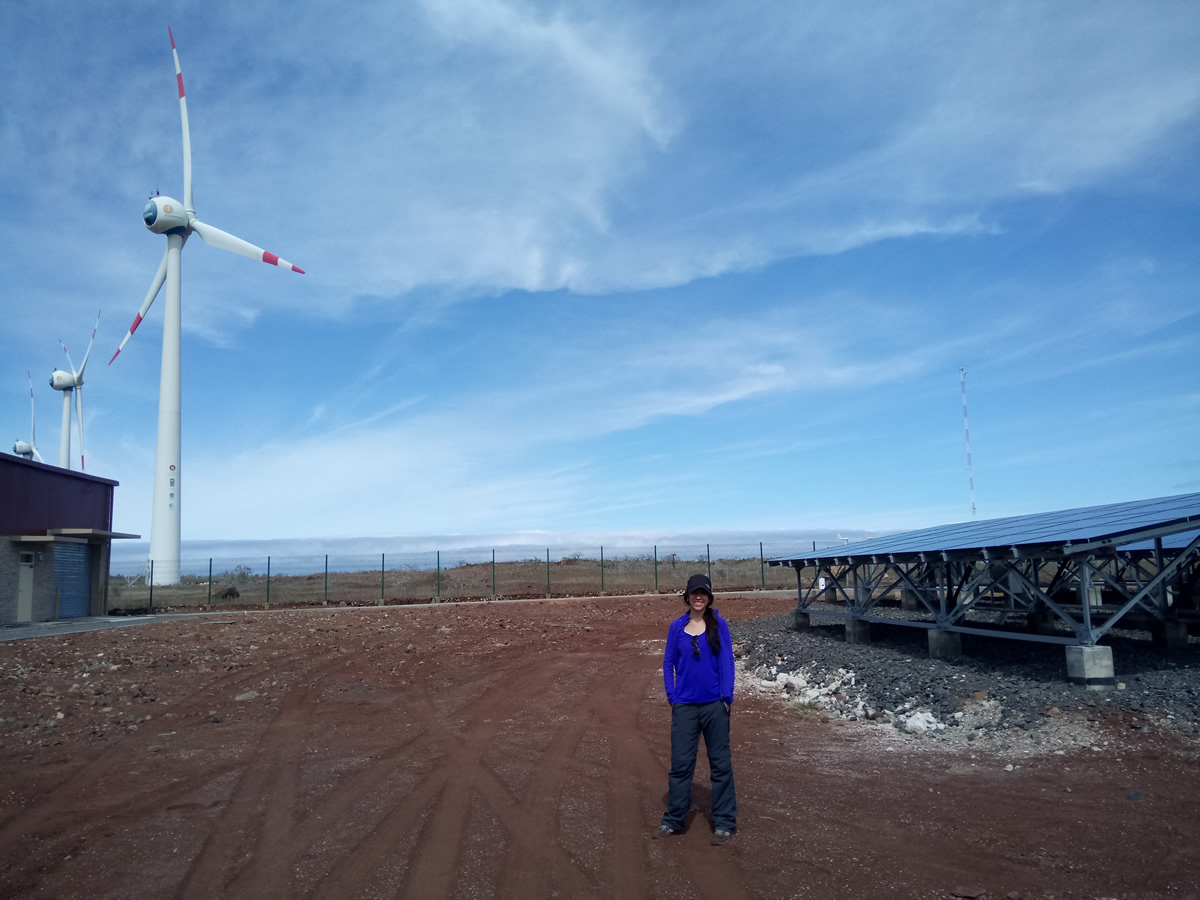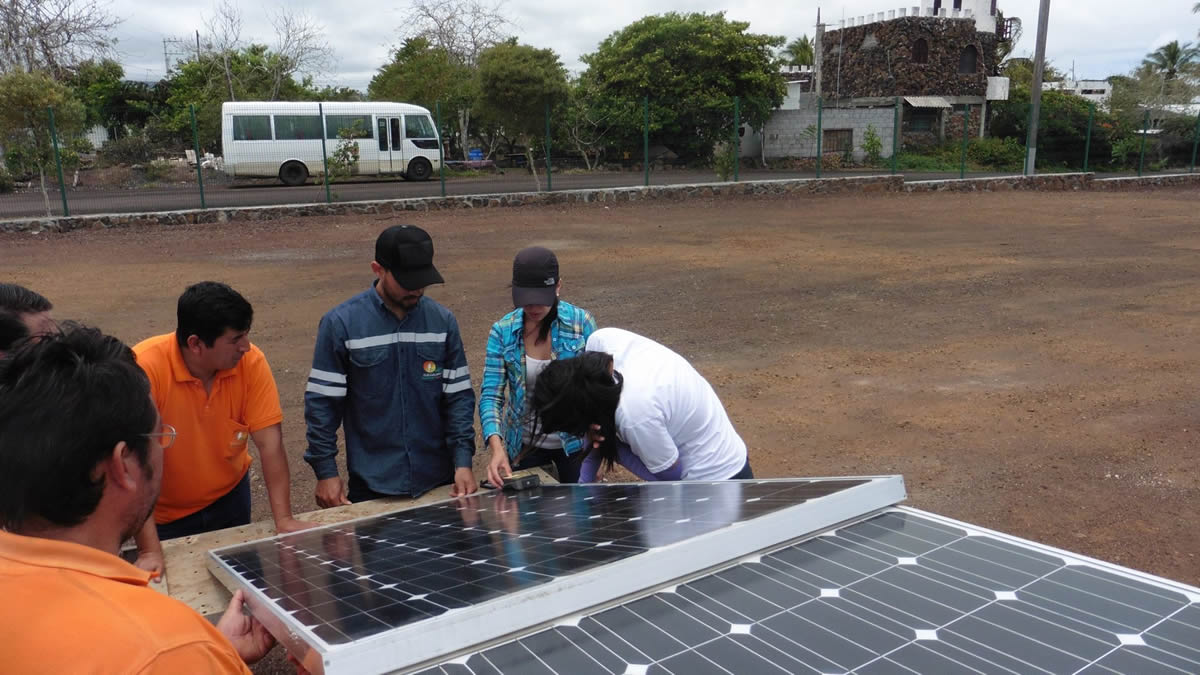The Galápagos archipelago is known for its remarkable biodiversity. The cluster of volcanic islands off the coast of Ecuador is home to an array of endemic species—organisms ranging from lichens and plants to birds, tortoises, and iguanas that have genetically adapted over time due to isolation. The islands’ endemic finches, along with a number of other species, were the subjects of Charles Darwin’s research as he developed the theory of evolution through natural selection.
The Galápagos Islands and their surrounding waters are sensitive environments that support diverse ecosystems and are particularly vulnerable to the effects of climate change and human disturbance. In an effort to protect this exquisite natural area, which includes the Galápagos National Park and the Galápagos Marine Reserve, UNESCO designated it a World Heritage Site in 1978.
Renewable energy to reduce reliance on diesel engines in the Galápagos

Electricity for the islands was, until recently, produced by diesel generators, with fuel delivered by tanker ships. However, two fuel spills—including a 2001 tanker accident that spilled nearly 150,578 gallons of diesel fuel near San Cristóbal Island—inspired the Ecuadorian government to reevaluate energy provision on the archipelago. Within the last decade, several international organizations have worked to develop renewable energy systems with the goal of reducing reliance on diesel generators and decarbonizing the Galápagos Islands.
Engineers are using HOMER Pro to evaluate improvements to Galápagos energy systems
Engineer Andrea Eras and her team from the Instituto de Energía Solar of the Universidad Politécnica de Madrid (IES-UPM) are currently focused on optimizing the existing renewable energy systems on the islands of Baltra and Santa Cruz. They’ve set out to evaluate a vast range of energy architectures using HOMER Pro to determine the most sustainable and reliable solution for completely decarbonizing the islands.
“The Galápagos islands are ideal for renewable energy,” explains Eras. “For instance, the annual solar energy radiation is around 5.7 kWh/m2/day and the average wind speed is approximately 6 m/s. We are also considering biodiesel in our analysis because jatropha (a tropical plant) is being cultivated in Ecuador to fuel thermal power plants on Floreana,” a neighboring Galápagos island.
The team’s project is supported by the Universidad Politécnica de Madrid, with technical and economic information for analysis supplied by the local public utility, Empresa Eléctrica Provincial Galápagos (ELECGALAPAGOS).
“We focused on Baltra and Santa Cruz,” Eras explains, “because of the high impact that renewable energy initiatives can produce there. This system represents 62% of the electricity generation of the archipelago.”

The islands of Baltra and Santa Cruz are connected by 51.4 km cable and powered by one hybrid system, which consists of a 13.9 MW thermal power plant, a 2.25 MW wind farm, a 1.5 MW peak PV system, another 67 kW peak PV system, and a 4.3 MWh energy storage system. About 18% of the system’s current energy generation is from renewable sources.
“Our research group hopes to support the Zero Fossil Fuel Initiative for the Galápagos islands and the Sustainable Development Goal 7 – Affordable and clean energy,” Eras says. “The optimization scenarios aim to meet the energy demand in 2030 with a higher share of renewable energy, led by the reduction of the Levelized Cost of Electricity”
Her team’s primary goals are to first identify the techno-economic potential of several different renewable energy technologies and are evaluating the inclusion of photovoltaic, wind, biodiesel-fueled-gensets, and energy storage systems in the generation mix. In order to do so, they are using HOMER Pro to perform extensive system analyses.
“Our team chose HOMER because the software is able to analyze and optimize complex cases that include very detailed information.”
And according to Eras, the team’s analysis is not only based on techno-economic information, it also takes into account geo-spacial limitations, since land use on the island is restricted. Only 3% of the area is inhabited, with the remainder protected.
As the archipelago’s endemic species face rising pressures related to climate change, decarbonization efforts are increasingly important.
“Right now, we are finalizing our analysis. We hope to have a final proposal at the beginning of the next year to present to the utility, ELECGALAPAGOS, and the local Ministry of Energy.”
As Eras and her colleagues work to optimize the islands’ energy system, she hopes to help mitigate the effects of climate change and support ecosystem conservation through the decarbonization of the hybrid system of Baltra and Santa Cruz.
Ultimately, the team aims to design a business model that will attract international investment to help them implement the additional renewable energy generation identified by their research. They hope to demonstrate how renewable energy technologies can reduce the operational deficit of the utility’s current generation system while supporting regulatory decisions that lay the groundwork for future renewable energy projects.

UL Solutions’ HOMER® Pro is the leading pre-feasibility design software for modeling microgrids, with more than 250,000 users in more than 190 countries. It provides engineering and financial analyses of remote, off-grid and grid-tied complex distributed energy systems, helping reduce financial risk for owners and developers. Learn more about HOMER Pro and download a complimentary trial.
